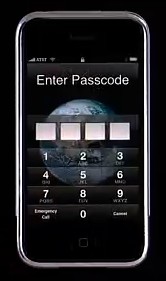I actually had a very hard time thinking of a name for this project. Nothing really seemed to fit too well or sound that good. But I needed some sort of name for my new project. You have to call it something… I finally settled on “Razor”. What does it mean? Nothing. What does it have to do with the project? Nothing other than now that is what the project will be known by. After not being able to think of a name for a while and itching to just start coding on the darn thing I just picked the name and it has just kind of settled.
Ok, so what is it? On the Google Code page that it is hosted at I wrote:
Razor is a strategy game engine which is oriented around programming the AI of the units rather than direct control by humans. The idea is that human players compete by engineering the intelligence of the units under their control in order to fulfill an objective. The game world is in 3D and will employ some basic physics. Units, AI, physics models and many other aspects are extensible through a plugin system.
Razor is for Mac OS X Leopard only due to leverage of certain Leopard exclusive features such as dynamic loading/unloading of Objective-C, Garbage Collection and more as time goes on.
This is an idea I have had banging around in my head for a long time. Ever since I worked on an AI lab in college where the final semester objective was to program the AI of 5 tanks to play capture the flag against 5 other tanks controlled by one of the AIs of my many classmates. At the end of the semester the class had a tournament in which the prize was an instant ‘A’ in the class and didn’t have to take the final! My lab partner and I won the tournament and even though we both had As in the class at that point, not having to take the final exam was a big time relief at the end of a very busy semester. Perhaps I will make a blog post on our winning strategy later.
Along with that, I have always loved the great strategy involved in RTS games like Starcraft (which in my opinion is the best RTS ever made). I loved thinking of crazy new strategies that would find kinks in established defenses or play with the psychology of the other players. The only thing that prevented me from pulling off my grand designs was the limitations of my own reflexes. Some people just have the twitch and can bounce from scene to scene, keep everything in their heads at once and make lightning fast and precise mouse movements. But if the Korean Starcraft scene is any indicator, these cyber-athletes like gymnasts have a limited lifespan. Once you hit the ripe old age of 22 your reflexes aren’t what they used to be and some pretty young 16 year old is going to take your spot. What I want in some respects is AI programmable Starcraft.
Now the project is only in its infancy and is nowhere near doing anything of significant interest at this point but I decided that I wanted to get the code into an initial functional state that would at least be worthy of initial check-in. Because the project is open source I will be commenting here about the work that I am doing on it, future feature additions and other issues with great openness and frequency unlike my closed projects.
Below is a screenshot of the Simulation Viewer app that you can build and run right now from the source that is posted on the project page. It is not much but it is a start.














